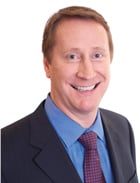Predicting the Top 2017 Dental Trends
To understand what oral health professionals should look for in 2017, we asked a number of experts about their opinions on this year’s trends. This is what Ed Shellard, D.M.D., Carestream Dental’s vice president of sales and marketing, had to say:
Advancements in digital dentistry make each year more exciting than the last. As we look ahead, 2017 will be no different. In addition to growing digital trends, we’ll also see a new business structure emerge. Let’s take a more detailed look at how oral health care might be different in 2017
Intraoral Scanning
Intraoral scanning will continue to grow in the upcoming years. While there may be certain cases where taking traditional impressions is necessary, 3D intraoral scanning is more comfortable for patients and more convenient for practices and labs. The growth of 3D intraoral scanning is the first step in digitizing the restorative workflow. While chairside milling is important, larger numbers of practitioners are choosing to defer the purchase of a mill until they are comfortable with the implementation of the 3D intraoral scanner. Fortunately, “open” scanners make it easy for doctors to work with labs.
Merging Data Sets
Along those same lines, we will see the merging of 3D intraoral data sets with CBCT data for implant planning and placement, fabrication of surgical guides and sleep apnea devices. Sophisticated software will automate data set merging, and intuitive interfaces will make this type of workflow easier to use and easier to implement in the practice.
Practice Consolidation
Finally, we will continue to see a rise in the consolidation of dental practices. Many young doctors coming out of school just want to practice dentistry and pay down their student loans—they don’t want to deal with the hassles of being a small business owner. So I think we will see more national practice groups emerging, as well as explosive growth of regional groups of 15-20 offices.
Whether a doctor is just entering the digital world; is the owner of a one to two chair practice; is an early adopter of digital technology; or is an employee of the country’s largest dental service organization, the one thing that stays consistent year after year is change. If doctors can embrace the change, then they’re sure to experience streamlined workflows, more accurate diagnoses and improved treatment planning.
To the success of your practice, now, and for years to come!






